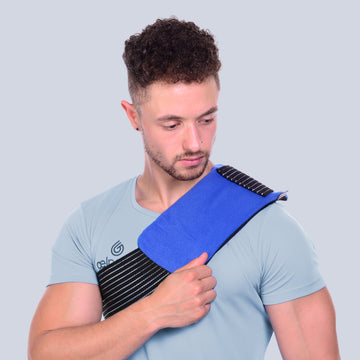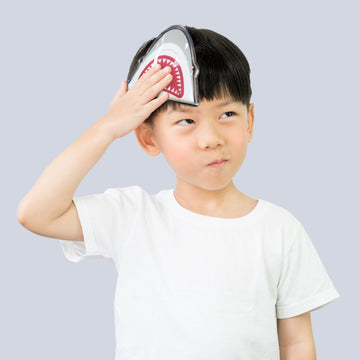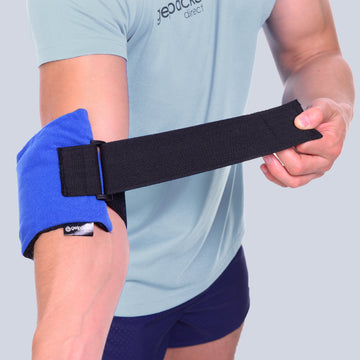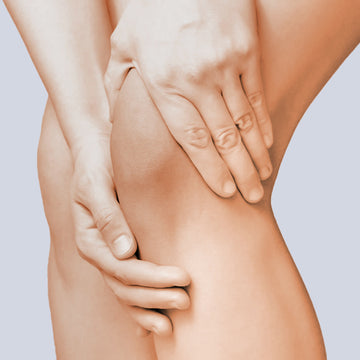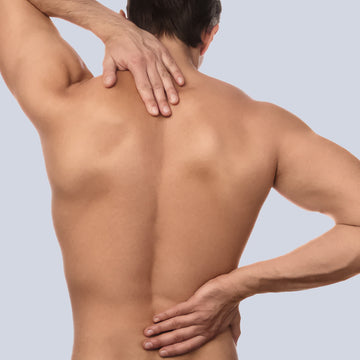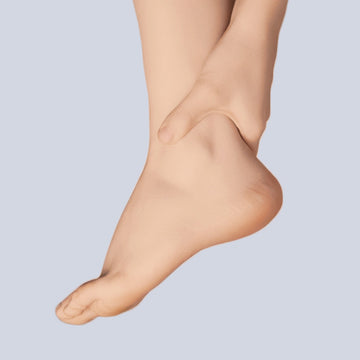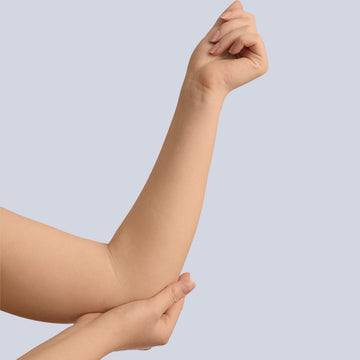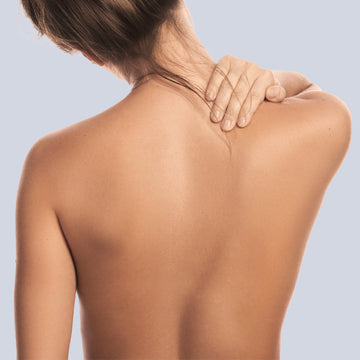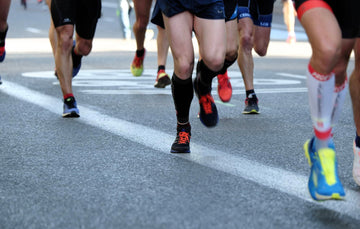Posted by Tia Patel | Feb-04-2021

A guide to relieving pain naturally
Struggling with pain? The mind is a very powerful thing, and mind-body techniques can help you learn how to cope with your pain and other symptoms. Ditch the paracetamol and try one of our 18 all natural and alternative techniques for pain management to alleviate pain.
Ice it. Using ice and/or a cold gel pack can on the painful area help reduce inflammation and numb pain by slowing your nerve impulses. In general, limit ice therapy to 15 or 20 minutes with a rest of at least 2 hours between applications—and keep a layer between the ice and your skin to reduce the risk for skin damage.
Soak in warm water. Soaking your body in warm water can alleviate many forms of muscle pain and muscle spasm, as well as various types of arthritis. There are many options for a warm soak, including a deep bathtub, whirlpool tub, or warm pool for water therapy.
Try dry heat therapy. If a soak isn’t for you, or you want to apply heat more often, there are plenty of other heat therapy options for your pain. Consider applying a heat pack or an adhesive back wrap that provides continuous low-level heat. Just remember to carefully read directions before using a heat therapy product to reduce the risk of a burn or other injury.
Click here for advice on how to get the most out of hot and cold therapy to treat injuries
Enjoy essential oils. Essential oils have long been valued for their analgesic effects in many cultures. There are many ways to benefit from essential oils—some people inhale them (aromatherapy), others include several drops in their massage oil and enjoy it as part of a therapeutic massage.
Try massage therapy. A high-quality therapeutic massage spurs blood flow, reduces muscle tension, and boosts feelings of wellness. Massage therapy is defined as the manipulation of soft tissues—muscles, tendons, and ligaments—through hands-on massage by a qualified massage therapist.
Enjoy the outdoors. 10 to 15 minutes of sun exposure a day can help the body produce vitamin D, which some studies have found can reduce chronic pain. Being out in the sunshine can also boost your mood and promote better immune function.
Exercise. Physical activity plays a crucial role in interrupting the "vicious cycle" of pain and reduced mobility found in some chronic conditions such as arthritis and fibromyalgia. Try gentle aerobic activities such as walking, swimming, or cycling.
Stretch and loosen up. Almost everyone can benefit from stretching the soft tissues (the muscles, ligaments, and tendons) in and around the spine. Your back is designed for movement, and if your motion is limited because you are in pain, it can make your back pain worse.
Click here for tips to stretch, strengthen and stabilise the hips
Meditate, relaxation and mind body techniques. Meditation comes in many varieties, some complex, others simple. One common approach is just to find a sound that is pleasing to you but may or may not have a meaning (like "som" or another sound), close your eyes, sit still and comfortably, and repeat the sound in your mind. When your thoughts wander, notice that they have wandered and return to your sound. If you feel your pain, notice the pain and return to your sound. Start with a few minutes, and gradually lengthen to 30 minutes if you find meditation to be enjoyable.
Biofeedback. This is a process that enables individuals to learn how to change physiological activity for the purposes of improving health and performance. This treatment is used for a variety of chronic pain and other medical conditions, and often consists of sensors placed on the patient’s body while physiological data is viewed digitally, and often in real-time. It is considered a self-regulatory therapy, because it increases awareness of physiological responses that may need to be changed to reduce symptoms and improve one’s life.
Chiropractic. Chiropractors look at the relationship between the structure and function of the body in order to decrease pain. The main focus is the spine, and most chiropractic visits involve adjustments that are designed to realign the body to promote self-healing. Chiropractic has been shown to be effective for a variety of pain syndromes, including lower back pain, neck pain, carpal tunnel, headaches, and sports injuries.
Hypnosis. This complementary and alternative approach is used to promote relaxation and induce an altered state of consciousness. The resulting psychological shift is intended to help people gain control over their states of awareness, which theoretically can help them gain control over their physical body, including their pain symptoms. Research suggests that hypnosis can help reduce the need for pain medication by decreasing the anxiety that’s typically associated with pain.
Music therapy. Studies have shown that music can help relieve pain during and after surgery and childbirth. Classical music has proven to work especially well, but there's no harm in trying your favorite genre — listening to any kind of music can distract you from pain or discomfort.
Yoga and tai chi. These two exercise practices incorporate breath control, meditation, and gentle movements to stretch and strengthen muscles. Many studies have shown that they can help people manage pain caused by a host of conditions, from headaches to arthritis to lingering injuries.
Swap more anti-inflammatory foods into your diet. Anti-inflammatory foods—such as fruits, vegetables, unsaturated fats, whole grains, beans, nuts, and fish high in omega-3 fatty acids—may play a role in reducing pain for some people. The Mediterranean diet and DASH diet both contain lots of anti-inflammatory foods and have been linked to reduced disease risk and better heart health. Here are some of our favourites:
Omega-3 Fish Oil - According to the NHS, a healthy diet should include at least one portion of oily fish. Oily fish like salmon, sardines and mackerel contain omega-3 fatty acids which could have a natural anti-inflammatory effect. The oil in fish has been used to treat skeletal and muscular diseases for hundreds of years, but recent research has shown that it could be used in the treatment of non-surgical neck or back pain. A fish oil supplement can be taken if fish cannot be consumed as part of your diet.
Ginger - Normally used to spice up dishes like curries and stir fries, ginger has long been used in different types of alternative or traditional medicine. It is typically used to treat digestive problems, flu and nausea, but could also be helpful against muscle pain caused by exercise.
Turmeric - A member of the ginger family, turmeric is a spice that gives curry a distinctive flavour and yellow colour. Traditionally used as a natural treatment for indigestion and upset stomachs, it is also used to provide natural pain relief for people with osteoarthritis. The key to turmeric’s effect on inflammation could be the compound curcumin.
Try acupuncture. Acupuncture involves stimulating certain acupoints on the body using fine needles or other methods. How acupuncture works is not entirely clear. It is thought that acupoints lie near nerve fibers. When acupoints are stimulated, the nerve fibers signal the spinal cord and brain to release chemicals that relieve pain.
Laugh more often. Laughter has many positive effects, including increasing blood circulation and oxygen intake, and raising your body's level of endorphins (the body's natural pain killers). There is a whole movement, called laughter yoga, which helps people enjoy the many benefits of laughter without having to need a reason to laugh—it just focuses on laughing for its own sake.
Get enough restorative sleep. Getting enough sleep is critical to managing pain and promoting healing, so it's important to employ a variety of sleep aids to help get a healthy amount of sleep. Regular exercise that physically exhausts the body helps promote deep sleep. Visualization, meditation, and other psychological techniques can also help you get to sleep and stay asleep.
Read our blog on getting a better nights sleep
Find support and understanding. Unlike a broken leg or other obvious sign of injury, chronic pain is usually unseen. Chronic pain is often a lonely experience and we encourage you to find people who can be supportive and understanding. There may be a chronic pain support group in your local community or hospital. Or you may prefer to interact online. You may get started with a local or online forum seeking help, and then go on to find that you have a lot to contribute—and helping others is also a way to help yourself.
Give these techniques a go and let us know how you get on!
#TeamGPD
